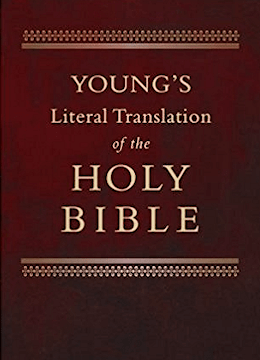Textus Receptus Bibles
Young's Literal Translation 1862
| 16:1 | And the lot for the sons of Joseph goeth out from Jordan `by' Jericho, to the waters of Jericho on the east, to the wilderness going up from Jericho in the hill-country of Beth-El, |
| 16:2 | and hath gone out from Beth-El to Luz, and passed over unto the border of Archi `to' Ataroth, |
| 16:3 | and gone down westward unto the border of Japhleti, unto the border of Beth-Horon the lower, and unto Gezer, and its outgoings have been at the sea. |
| 16:4 | And the sons of Joseph -- Manasseh and Ephraim -- inherit. |
| 16:5 | And the border of the sons of Ephraim is by their families; and the border of their inheritance is on the east, Atroth-Addar unto Beth-Horon the upper; |
| 16:6 | and the border hath gone out at the sea, to Michmethah on the north, and the border hath gone round eastward `to' Taanath-Shiloh, and passed over it eastward to Janohah, |
| 16:7 | and gone down from Janohah `to' Ataroth, and to Naarath, and touched against Jericho, and gone out at the Jordan. |
| 16:8 | From Tappuah the border goeth westward unto the brook of Kanah, and its outgoings have been at the sea: this `is' the inheritance of the tribe of the sons of Ephraim, for their families. |
| 16:9 | And the separate cities of the sons of Ephraim `are' in the midst of the inheritance of the sons of Manasseh, all the cities and their villages; |
| 16:10 | and they have not dispossessed the Canaanite who is dwelling in Gezer, and the Canaanite dwelleth in the midst of Ephraim unto this day, and is to tribute -- a servant. |

Young's Literal Translation 1862
Young's Literal Translation is a translation of the Bible into English, published in 1862. The translation was made by Robert Young, compiler of Young's Analytical Concordance to the Bible and Concise Critical Comments on the New Testament. Young used the Textus Receptus and the Majority Text as the basis for his translation. He wrote in the preface to the first edition, "It has been no part of the Translator's plan to attempt to form a New Hebrew or Greek Text--he has therefore somewhat rigidly adhered to the received ones."